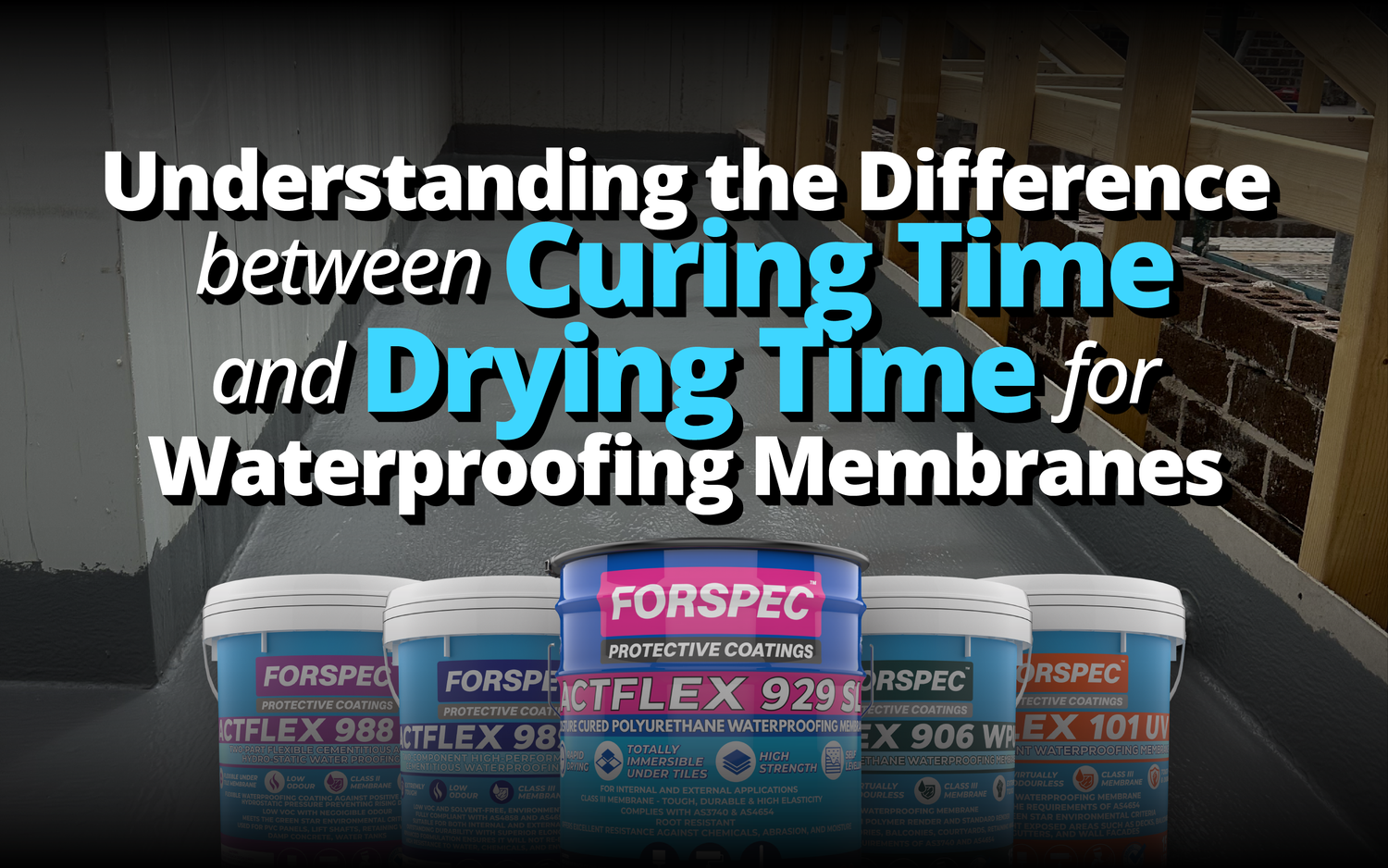When working with waterproofing membranes, understanding the difference between curing time and drying time is crucial to ensuring the best performance and longevity of the system. Misinterpreting these two concepts can lead to premature failure, adhesion issues, or compromised waterproofing.
Let’s break down the key differences and why they matter.
 What is Drying Time?
What is Drying Time?
Drying time refers to how long it takes for a waterproofing membrane to become touch-dry or reach a state where it is no longer wet to the touch. This phase is typically the result of solvent or water evaporation from the membrane.
Factors Affecting Drying Time:
- Ambient Temperature & Humidity – Warmer temperatures and low humidity accelerate drying, while cold and humid conditions slow it down.
- Ventilation – Good airflow speeds up drying by allowing moisture or solvents to escape more quickly.
- Coating Thickness – Thicker layers take longer to dry, while thinner applications dry faster.
- Membrane Type – Some membranes, such as solvent-based options, dry faster than water-based or cementitious membranes.
 What is Curing Time?
What is Curing Time?
Curing time is the period required for a waterproofing membrane to fully react and develop its optimal strength, adhesion, and waterproofing properties. Unlike drying time, which primarily involves moisture or solvent evaporation, curing involves chemical reactions that solidify the membrane’s structure.
Factors Affecting Curing Time:
- Chemical Composition – Polyurethane and epoxy-based membranes require longer curing times compared to acrylic or cementitious systems.
- Temperature & Humidity – Just like drying time, curing is affected by environmental conditions, with lower temperatures extending the process.
- Water Exposure – Premature water contact before full curing can compromise membrane performance.
- Number of Coats – Additional coats extend curing time as each layer needs to bond properly with the previous one.
 Why Understanding the Difference Matters
Why Understanding the Difference Matters
- Application Timing:
- Drying time determines when you can apply the next coat of waterproofing.
- Curing time determines when the surface is ready for tiling, screeding, or exposure to water.
- Failure Prevention:
- Rushing the installation process based on drying time alone can lead to weak adhesion and compromised waterproofing.
- Ensuring proper curing before exposure to moisture prevents delamination or softening.
- Product-Specific Requirements:
- Always check the manufacturer’s specifications for both drying and curing times.
- Some products may require 24-48 hours to dry but need 7 days to fully cure before being submerged in water.
Key Takeaways
- Drying Time = The time it takes for the membrane to be touch-dry or ready for recoating.
- Curing Time = The time required for the membrane to reach full strength and waterproofing capabilities.
- Always follow product guidelines and consider environmental conditions to ensure a successful waterproofing application.
By understanding the difference between drying and curing times, professionals can avoid costly waterproofing failures and ensure their systems perform as intended. Proper planning and adherence to curing schedules can make all the difference in achieving a durable and long-lasting waterproofing solution.




Leave a comment
This site is protected by hCaptcha and the hCaptcha Privacy Policy and Terms of Service apply.